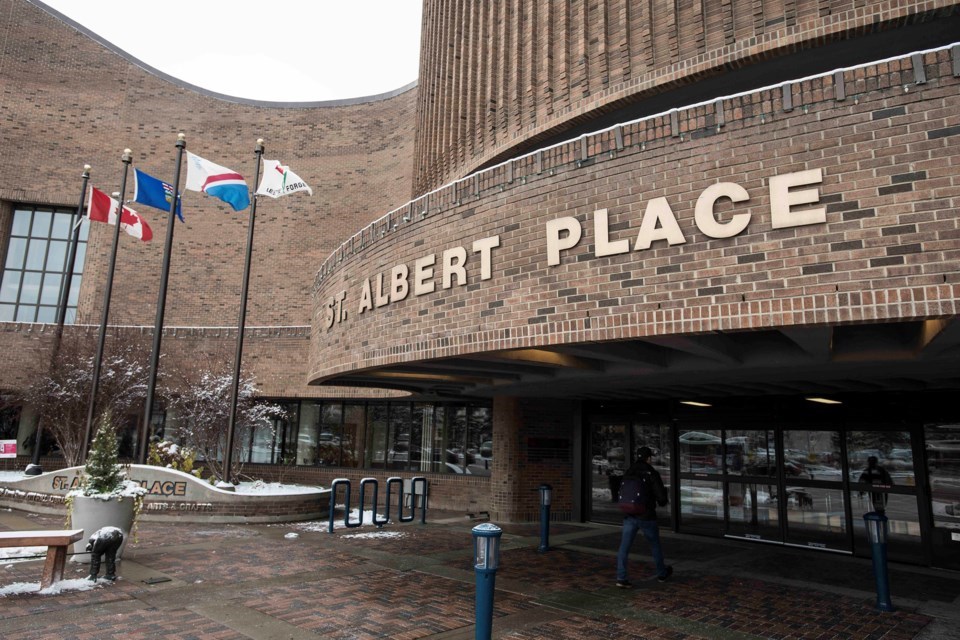The City of St. Albert published a new long-term Green Environment Strategy last week, one of 10 long-range strategies administration will be bringing forward as a result of council's approval of the Municipal Development Plan in 2021.
Municipal Development Plans, or MDPs, were made mandatory to have in each Alberta municipality by the provincial government back in 2018. MDPs are considered the highest-level planning document each municipality has, and subsequent planning documents, such as Area Structure Plans, must conform to the goals and principles established in an MDP.
St. Albert's MDP is called Flourish: Growing to 100k.
The new 35-page Green Environment Strategy (GES) sets the foundation for the city to try and accomplish Flourish's environmental goal of ensuring “St. Albert values and protects the natural environment, conserving and enhancing its features and functions for the well-being of our community and our planet.”
According to the GES, administration will be focusing on four “strategic directions” when it comes to the environment in the years to come: the Sturgeon River watershed; biodiversity; environmental stewardship; and governance. These strategic directions are then further broken down into four “foundational principles” that are one sentence descriptions addressing the need to conserve, protect, and enhance various types of natural features of the area.
“Taking care of our environment is critical to the success and growth of our city,” the GES reads.
To ensure the environment is taken care of, the GES contains a list of measures the city will take to ensure the strategic directions are being followed, although the measures are limited to various types of environmental monitoring, which the city has already been doing.
For example, in order to “protect, conserve, and enhance natural features within St. Albert,” the GES explains that the city will monitor the amount of natural area lost to new development, and monitor wildlife stepping stones, which are undeveloped pieces of land that ideally provide ways for animals to move undisturbed through the city.
Another example is that in order to “conserve and enhance the diversity and health of wildlife vegetation and landscapes within St. Albert,” the city will monitor changes in the vegetation index, track the number and location of invasive species present in the area, and monitor wildlife interactions like the number of wildlife complaints made my members of the public or the number of incidents where animals are hit by cars.
The GES does contain a list of projects and initiatives the city could do to achieve its environmental goals, some of which will require council approval for new funding, city spokesperson Kathy deJong said. The list is contained in the GES' “implementation plan.”
Among the initiatives that will require additional investment, the GES explains, are using real-time water quality monitoring technology instead of the quarterly water quality tests being performed currently; developing a restoration program for unhealthy riparian areas; creating a “natural area protection policy,” and more.
“The implementation plan guides any actions that Administration needs to take to deliver on the Strategic Directions set out in the GES,” dejong said. “The implementation plan includes projects which may be brought before Council for review and approval, should new resourcing or policies be required, or would result in changes to existing program or service levels.”
deJong also said that the implementation plan will be updated regularly.
Besides updating the implementation plan on a regular basis, administration will also produce an annual report on the strategy as a whole each year, and the strategy itself will be updated every five years, according to the GES document.
Multiple members of council the Gazette spoke to, as of Jan. 19, said they hadn't had the chance to read the new strategy.
deJong explained that most of the nine remaining long-range strategies, covering topics such as “cultural richness,” “resilient infrastructure,” “housing options,” and more, haven't been started yet.
“Currently, the Organizational Strategy is under development and the Mobility Choices Strategy is scheduled to begin this year,” she said. “Start dates will need to be finalized for each of these and the remaining long-range strategies.”
The city's 2024 budget includes $1 million for the Mobility Choices Strategy.




